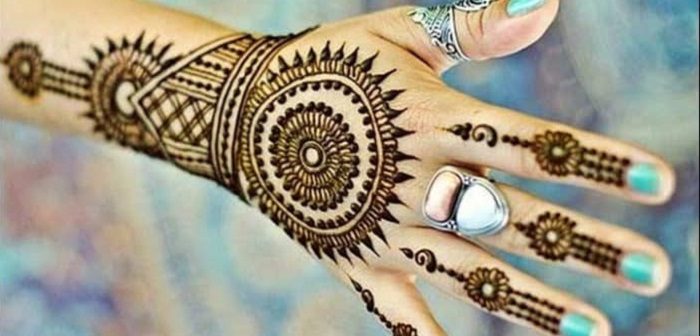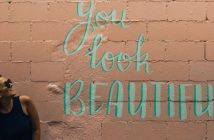Growing up, I would often watch my Somali and Indian neighbors sit on the steps of our building and tattoo each other. It would always be a gaggle of three to four women, working in tandem on one in the group, one tackling the hands, the other tackling the feet, while a third handed packets of henna squeezed into a conical shape at the end of a makeshift paper dispenser to the artists busy at work. It was always a masterful experience. No two patterns would ever turn out the same. The details rendered on the skin would be crisp, symmetrical and entrancing. These activities, in my mind, would for a long time be tied to the advent of holy days in the Muslim and Hindu religions. On occasion, one would see older Somali men with vibrant red Henna-dyed beards strolling down the street. At times, my mother herself would use it to paint her nails. I tried a few times myself but would regret it as the henna would permanently stain the nails and one would have no other recourse but to let it grow out – a big no-no for a school-going boy at the time.
But in the recent past, the art of henna application has seen a resurgence. Henna itself, a product of powdered dry leaf from a plant endemic to the Northern and Eastern regions of Africa, parts of the Middle East and a few regions in India, has been a staple in the beauty industry the world over for centuries. Now, people seeking natural, even vegan alternatives for hair and skin treatments have turned to henna gloss to fortify their tresses naturally. It has also become a part of the alternative art scene in the West, used in self-expression and body art, without the potential harm that comes with permanent tattoos. This permeation of henna into the mainstream has happened in no small part due to the influence of Middle Eastern, African and Indian culture in the west. But one would wonder, how does such an ancient art so tied to specific cultures and religions make its way to China, relatively untouched by outside influences in these two respects, and spark a revolution in the world of body art? Akila, a Beijing-based professional henna artist, offers us a glimpse into the world of henna art in Beijing.
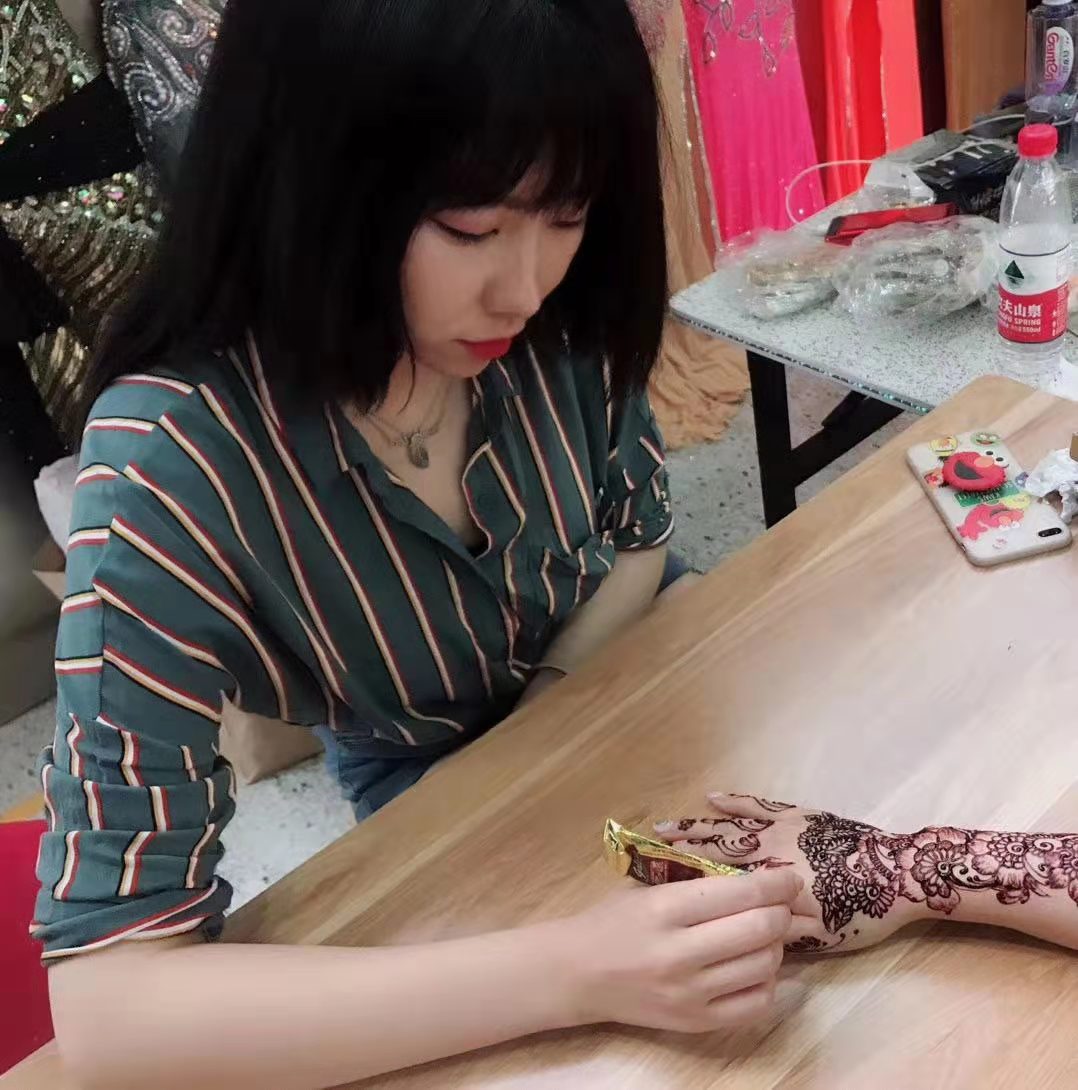
Akila working on a client
What inspired you to venture into the world of Henna art and how did you discover it?
In China, some channels show Indian movies, and in them you are likely to see beautiful wedding scenes with the bride covered in beautiful patterns of flowers on her hands and legs. It’s tradition that the bride gets this done the night before the wedding. The family of the bride calls upon a specialist to do this job. In India, it has a special name. Indians call it Mehndi; other countries call this henna. I found this and other information through TV and by reading about it online. It sparked my interest and I decided to give it a try.
What is it that you find most fascinating about this art?
It is a different way of communicating with other people. When I draw these henna designs on women from all over the world, I get to learn about their favorite styles as per their countries of origin, and in this way I get to learn more about different cultures. In a way, I feel I am a part of their culture and I understand their languages as well as their views on beauty. This is not something you can simply learn from a book or by searching the internet. But the most important thing about what I do is it brings me immense satisfaction.
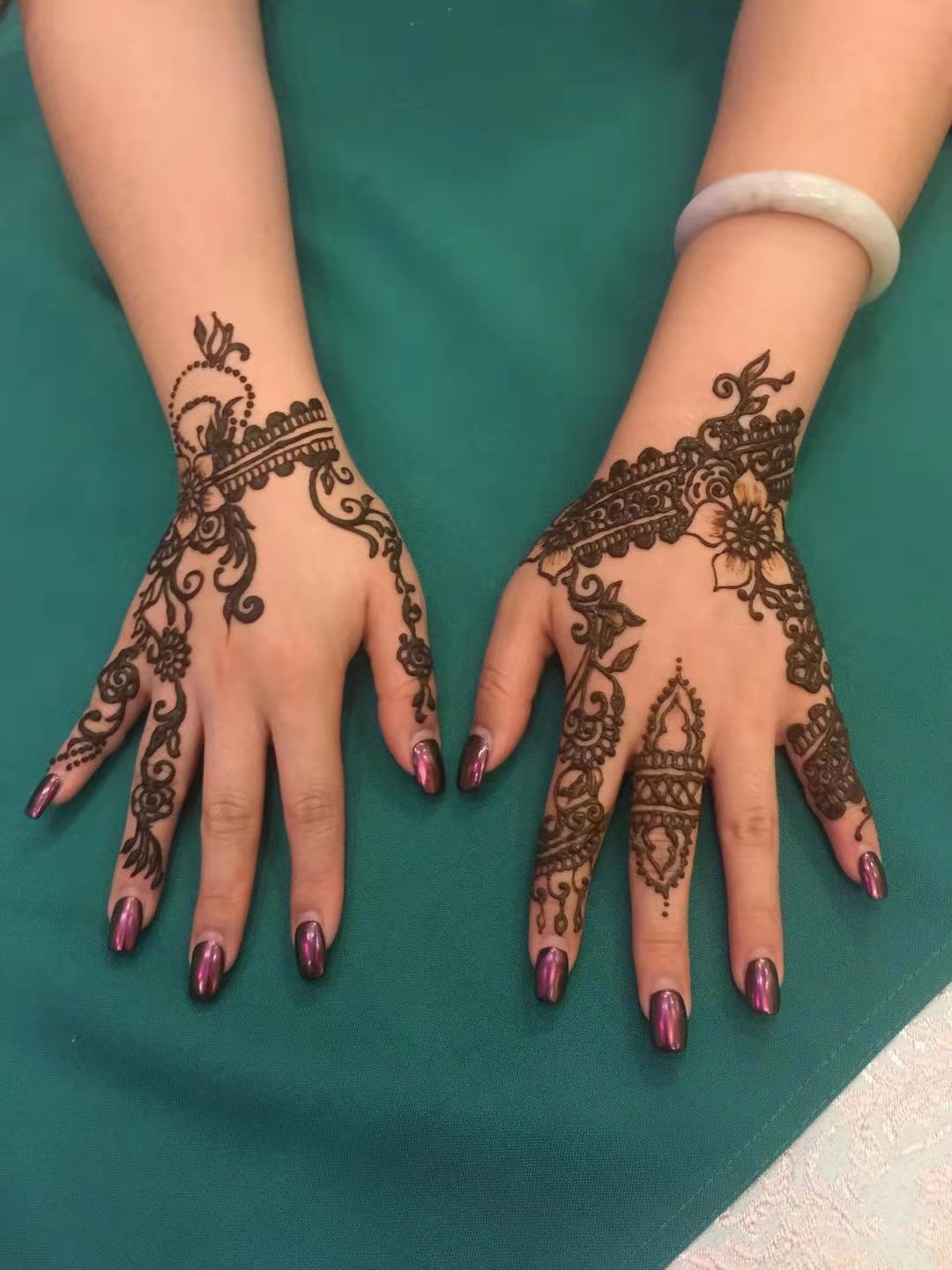
What sort of clients do you usually get at your studio and what do they ask for?
No two clients are ever the same. They can range from students at university cultural fairs, to embassy staff. There is no simple definition for the kind of person who might get a henna tattoo. They are diverse. But one thing they have in common is they love beauty and art. And they are also often people who are curious about the culture of other countries.
What is the hardest thing about doing what you do?
This kind of work needs a steady hand. There is never room for mistakes. But at the same time, it is not the kind of art you can just simply practice. It is very different from drawing on paper, it is drawing patterns on a person’s skin. You must also be endlessly creative while remembering different pattern combinations. Different sets work well together. It is not simply a matter of drawing as you wish. But through patience, I have gotten the hang of it. So I think persistence is key, especially at the beginning. It is difficult to explain what henna art is to those who have never been exposed to it or don’t even have an idea of what it might be. Many Chinese people don’t know what this is. They need someone to tell them what it is and its significance. It is not just simply drawings on skin, it has a cultural significance and history. I often have to explain that henna is a natural product made from leaf powder into paste. I also have to make them understand that it is semi-permanent but will wash off in a few weeks. Also, depending on the hue of client, the henna’s intensity might differ. So no two results are the same. Many Chinese people think it’s like chocolate frosting on a cake, you can eat it. But that is also not the case. In the end however, I think Chinese people and people from all over the world need more opportunities to get in touch with the joys of henna.
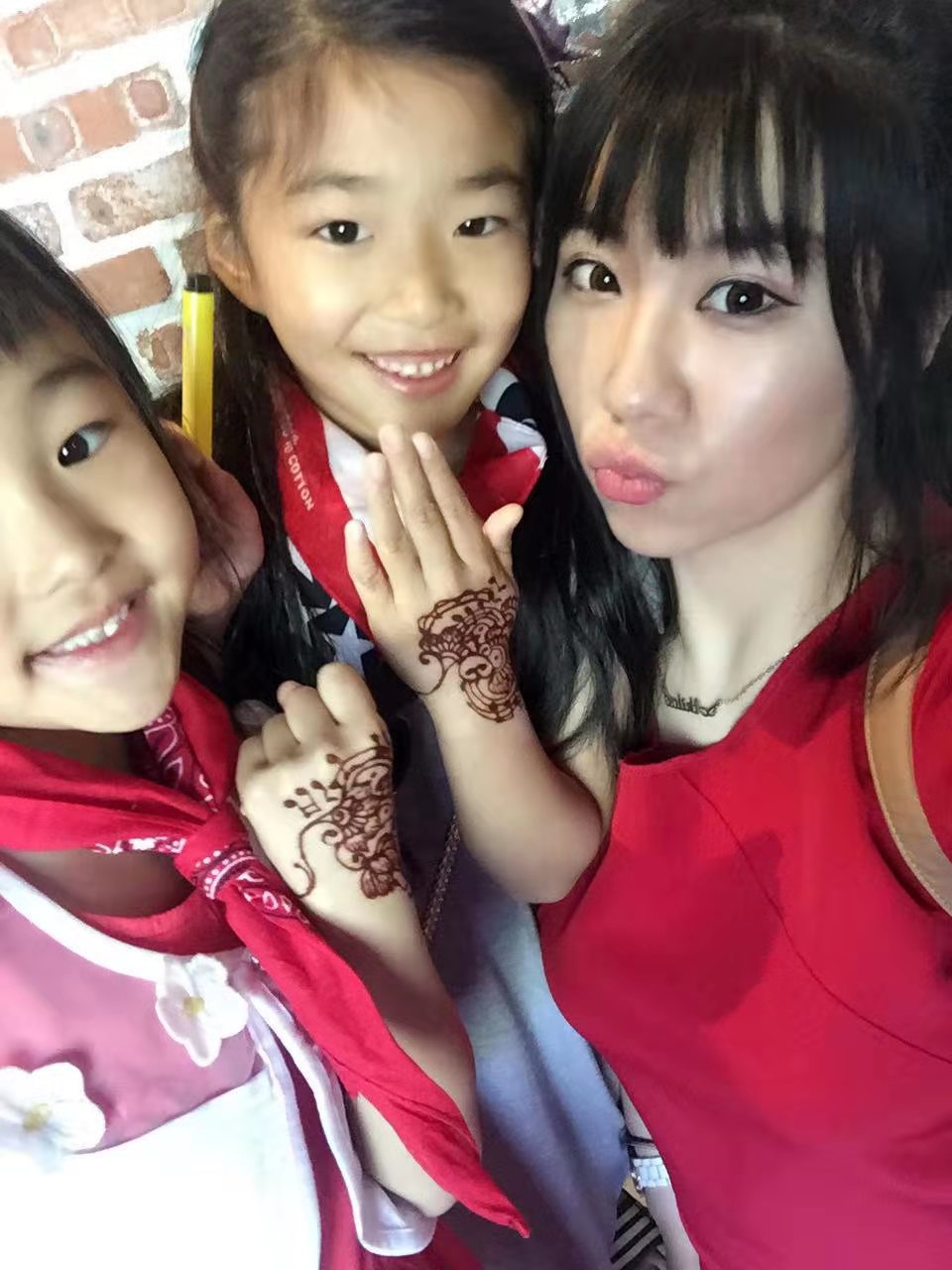
Akila with young fans of Henna arts
What are your dreams for your art ?
I have a dream to be the top henna artist in the country; but also to be an ambassador of not only this art, but of the countries which have had this form of art as part of their cultures for years. As a Chinese person, I am not who you would typically expect to be representing such an art. But that is an advantage because it gives me visibility. When people see a Chinese woman doing henna, they are curious and in that way, I get my chance to educate.
How do your family and friends react to your chosen art?
What makes me feel lucky is that many of my friends have helped me a lot,by introducing clients to me and even helping me organize henna-related events. As for my family, my parents are very supportive of me and respect my choice. My mother said, “Do what you like and don’t regret when make your decision. You must stick with it for however long it takes to turn it into a success.” And I intend to take her words to heart.
Photos: Courtesy of Akila

